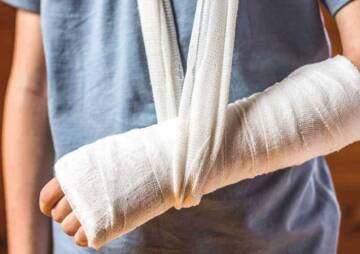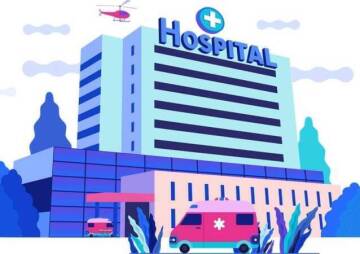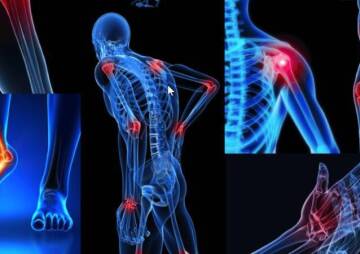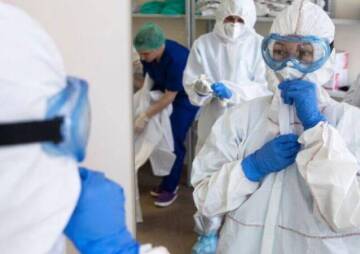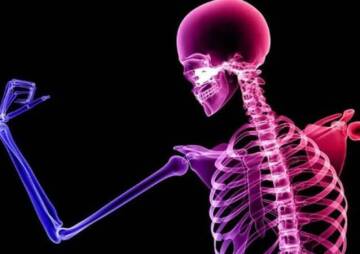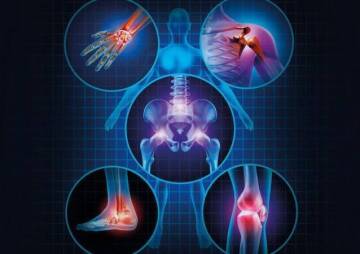-
فئة
Craniomaxillofacial Surgery
Orthopedic Surgery
Spine Surgery
Orthopedic Implants
Hip Surgery
Knee Surgery
Pectus Excavatum
Bone Graft
Disinfectants
Healthcare
What causes coccidiosis and how can you get rid of it?
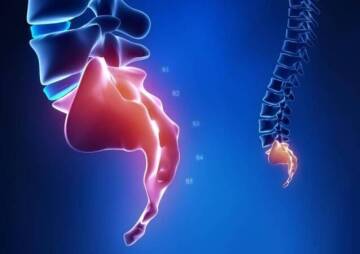
Coccidinia is a pain that is felt in the tailbone of the spine.
This pain often gets better after a few weeks, but sometimes it needs to be treated. In this article, you will know the pain of the spine tail.
Coccydynia is a pain felt in the tailbone of the spine. The tailbone is the last bone in the spine, and pain in this area can be caused by falling, giving birth, sitting too long, or in rare cases, a tumor.
In most cases, the pain goes away in a few weeks or months, but sometimes it can be much longer and severely affect the patient's ability to perform daily activities.
What is the cause of this pain? How is it diagnosed? How is it treated? And what are the ways to prevent it? You will find the answers to all these questions in this article.
What is the role of the tailbone in the body?
The coccyx is located at the bottom and base of the spine. This bone is triangular in shape and forms the lower side of the spine below the sacrum.

Depending on individual growth, the tailbone may consist of three to five bones. This piece of bone is not fixed and its bone parts have limited movements that are performed by ligaments and joints attached to them. How about
The tailbone attaches to the sacrum through the sacrococcygeal joint. At the same time, the pelvis and legs move slightly back and forth. When sitting and standing, all the pelvic bones, of which the tail is a part, move in and out for balance.
The tailbone is the junction of many pelvic floor muscles. These muscles support the anus and help with defecation, support the vagina in women, and help walking, running, and moving the legs.

Also read this post: Spinal Injection Side Effect
What is coccidinia?
Tail bone pain is mild to severe depending on the extent of the injury. Acute pain usually occurs suddenly and resolves within a few days to a few weeks, but chronic pain caused by inflammation can last for more than three months.
Symptoms of coccidinia
Symptoms of coccidiosis may vary from person to person, sometimes even manifesting themselves with other symptoms. But in general, its common symptoms are:
Localized pain
In this condition, the pain is felt only in the area of the tailbone and not in the pelvis and other bones. This pain is sometimes mild and sometimes severe. Sometimes it persists continuously and sometimes it is felt by pressure and movement of the tail tail escape.

Pain when sitting
In this case, the person feels pain when sitting or leaning back. Or when sitting on hard surfaces without a cushion. Or, for example, he feels pain while cycling.
Pain when moving from sitting to standing
In this case, rotation of the pelvic bones and muscle movements may cause pain in the tail. This pain can be so severe that it is difficult for the person to stand and sit and the person needs to lean on something to change the position more easily.
Pain during sex and defecation
Due to the proximity of the tail to the anus and genitals, in these cases the patient may feel mild to severe pain.
The most common causes of tail pain
The causes of coccidinia vary. But the most common of these are:
Hitting the buttocks
Direct trauma to the tailbone is the most common cause of coccidinia and usually leads to inflammation and pain around the tailbone. The ligaments become inflamed and sometimes the front or back of the tailbone becomes fractured and dislocated.

Continuous pressure on the tailbone
Some activities, such as horseback riding and cycling, will cause pressure and pain in the tail area for a long time. Of course, this pain is not permanent, but if it is not controlled, it may turn into chronic pain and cause long-term irritation of the sacrocytial joint.
Natural childbirth
During delivery, the baby's head passes over the tailbone, and pressure on the tailbone may damage the tailbone structures (discs, ligaments, and bones). Although it is very unusual, sometimes this pressure causes damage and fracture of the tail.

Tumors and infections
In very rare cases, the presence of a tumor next to the tailbone or an infection in the lateral parts of this bone can spread to it and cause pain and inflammation of the tailbone.
Cancer
One of the rare causes of coccidiosis is cancer. This cancer can be bone cancer or cancer in other areas that have spread to this area. (Metastatic cancer)
Pain transmitted from other parts to the tail
This is not uncommon, but pain may spread to other parts of the spine or pelvis and even the bladder.
Factors that have a greater impact on coccidiosis
Bone pain is generally more common in women than men, but in general some factors will increase the risk of developing it.
overweight
Obesity interferes with the movement of the pelvic bones. Sometimes this constant pressure will cause tail pain. Studies have shown that if the body mass index (BMI) is higher in women than 27.4 and in men more than 29.4 in men, the risk of coccidinia is higher.

Very low weight
Excessive weight loss is also one of the causes of coccidiosis. In this case, the tailbone will be more prone to injury due to insufficient fat in the buttocks.
Gender
Due to the larger pelvic angle as well as trauma to the tail during childbirth, women are more prone to coccidiosis.

Age
In old age, the small discs of cartilage (a resilient, flexible tissue) that help hold the tailbone in place wear out, and the bones that make up the tailbone become more firmly in place. This can put more stress on the tailbone and lead to pain.

How is coccidinia diagnosed?
Usually in cases where the pain is not mild and annoying, the patient will not seek to find the exact cause. But severe pain indicates a serious problem. That is why its correct diagnosis is so important.

In the initial stage, a clinical examination and review of the patient's medical history is performed. If necessary, diagnostic methods such as testing; Imaging, X-rays, CT scans and MRIs are used to accurately diagnose the disease. Some conditions, such as sciatica, shingles in the buttocks, sacroiliitis, or fractures, have similar symptoms to coccidinia.
What is the treatment for bone marrow pain?
Non-surgical treatments are successful in treating coccidinia in approximately 90% of cases.
- The use of anti-inflammatory drugs such as non-steroidal anti-inflammatory drugs (ibuprofen, naproxen) or COX-2 inhibitors will reduce tailbone inflammation.

- Applying a cold compress and ice pack several times a day for the first few days of the onset of pain reduces inflammation and pain.
- Using a hot water bag for the first few days of pain can reduce the muscle tension that causes coccygeal pain.
- Changes in the way you perform daily activities that cause more pressure and stimulation of the tailbone. For example, standing in front of a table instead of sitting for a long time or using medical pillows to sit.

- Change your diet and eat high-fiber foods if you have constipation and need to sit on the toilet for a long time; Makes defecation easier and reduces pressure on the tail.
- Physiotherapy and special sports exercises that reduce pressure on the tailbone.

- Injections of anesthetics (lidocaine) and steroids (to reduce inflammation) around the tailbone can relieve pain. Of course, this injection is done up to three times a year.

- Massaging the tense pelvic floor muscles that move to the tailbone may reduce coccidinia
- And in rare cases, non-surgical treatments do not work and your doctor may recommend surgery to solve the problem.
Prevention of coccidinia
Prevention The main key is to prevent the recurrence and recurrence of tail pain. Prevention methods such as the following will prevent you from getting coccidiosis.
- Sit well, avoid sitting for long periods of time, stand well and move well
- Regular exercise with stretching and strengthening
- Exercise with appropriate equipment and methods
![]()
- Use a seat belt when traveling
- Creating an ergonomic work environment
- Good nutrition, good weight
- Reduce stress and do not smoke
Also read this post: Exercises After Back Surgery
By following these tips, you can prevent tail pain.
Sources:
